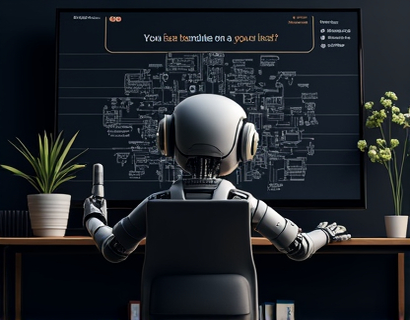Smart Home Essentials: Embracing the Future of Home Living with Cutting-Edge Appliances
In the rapidly evolving landscape of home technology, the concept of a smart home has transformed from a futuristic dream into a tangible reality. The integration of high-tech appliances into daily life offers unprecedented convenience, efficiency, and comfort. This article delves into the latest innovations in smart home essentials, exploring the benefits and practical applications of these advanced devices. Whether you are a tech enthusiast or simply looking to enhance your living space, understanding the key components of a smart home can guide you in making informed decisions about the products that best suit your lifestyle.
Understanding Smart Home Technology
Smart home technology encompasses a wide range of devices and systems that can be controlled remotely via smartphones, tablets, or voice commands. These devices communicate through a central network, often using Wi-Fi or Bluetooth connectivity, to create a seamless and interconnected living environment. The core idea is to automate routine tasks, optimize energy usage, and provide real-time monitoring and control over various aspects of home life.
The evolution of smart home technology has been driven by advancements in IoT (Internet of Things), artificial intelligence, and machine learning. These technologies enable appliances and systems to learn from user behavior, adapt to preferences, and perform tasks with minimal human intervention. From smart thermostats that adjust temperatures based on occupancy to smart locks that grant access remotely, the possibilities are vast and continually expanding.
Key Categories of Smart Home Appliances
To navigate the world of smart home appliances, it's helpful to categorize them based on their primary functions. This approach not only simplifies the selection process but also highlights the diverse range of products available to enhance different aspects of home living.
Smart Lighting Systems
Smart lighting systems offer unparalleled flexibility and energy efficiency. These systems allow you to control the brightness, color, and timing of lights throughout your home using a smartphone app or voice commands. Benefits include reduced energy consumption, enhanced security through motion-activated lighting, and the ability to set moods for different activities or occasions. Popular brands offer a variety of smart bulbs and fixtures that integrate seamlessly with existing lighting setups.
Smart Thermostats
Smart thermostats are a cornerstone of energy-efficient home management. These devices learn your temperature preferences and adjust heating and cooling systems accordingly, leading to significant energy savings. Advanced models can integrate with weather forecasts and occupancy sensors to further optimize performance. Features like remote access and scheduling make it easy to maintain a comfortable home environment without wasting resources.
Smart Security Systems
Home security has never been more sophisticated. Smart security systems combine cameras, sensors, and alarms to provide comprehensive protection. These systems can be monitored and controlled remotely, sending alerts to your smartphone in case of suspicious activity. High-definition cameras with night vision and motion detection ensure that you have clear visibility of your home's perimeter. Some systems also integrate with smart locks and door sensors to create a multi-layered security approach.
Smart Appliances
Smart appliances extend beyond the basics to include refrigerators, ovens, washing machines, and more. These devices offer connectivity features that enhance functionality and convenience. For instance, smart refrigerators can track inventory, suggest recipes based on available ingredients, and even order groceries online. Smart ovens allow for remote preheating and cooking, while smart washing machines can adjust cycles based on load size and fabric type.
Voice Control and Smart Speakers
Voice control has become a pivotal aspect of smart home technology. Smart speakers and virtual assistants like Amazon Echo, Google Nest, and Apple HomePod serve as central hubs for controlling various smart devices. These devices respond to voice commands, play music, set reminders, and provide information on demand. The convenience of hands-free operation makes them indispensable in modern homes.
Smart Home Automation Hubs
To ensure seamless integration and control of multiple smart devices, automation hubs play a crucial role. These central units act as the brain of your smart home, connecting and coordinating various devices. They support a wide range of protocols and can handle complex automation scenarios, such as turning on lights when you enter a room or adjusting the thermostat based on your schedule. Popular automation hubs include Samsung SmartThings, Wink Hub, and Google Nest Hub.
Benefits of Smart Home Appliances
The adoption of smart home appliances offers numerous advantages that extend beyond mere novelty. Here are some key benefits to consider:
- Convenience: Control your home devices from anywhere, streamlining daily routines and reducing the need for manual adjustments.
- Energy Efficiency: Smart devices optimize energy usage, leading to lower utility bills and a reduced environmental footprint.
- Enhanced Security: Advanced security systems provide peace of mind, protecting your home and belongings with real-time monitoring and alerts.
- Personalization: Smart appliances learn your preferences and adapt to your lifestyle, creating a more personalized and comfortable living environment.
- Remote Access: Monitor and control your home from a distance, ensuring that you can manage your home even when away.
Choosing the Right Smart Home Appliances
With the vast array of smart home appliances available, selecting the right products for your home can be overwhelming. Here are some factors to consider when making your choices:
Compatibility and Integration
Ensure that the devices you choose are compatible with your existing systems and can integrate seamlessly with other smart devices. Look for products that support popular smart home platforms like Google Home, Amazon Alexa, or Apple HomeKit.
User Interface and Ease of Use
The user interface should be intuitive and user-friendly. A well-designed app or voice commands should make controlling your devices straightforward and enjoyable. Consider the learning curve and whether the device offers guided setup and support.
Reliability and Security
Security is paramount in smart home devices. Choose products from reputable brands with a track record of robust security measures. Regular software updates and strong encryption protocols are essential to protect your data and prevent unauthorized access.
Performance and Quality
Evaluate the performance and build quality of the devices. High-quality components ensure longevity and reliable operation. Read reviews and test products if possible to gauge their performance in real-world scenarios.
Cost and Value
While premium products often come with higher price tags, it's important to consider the long-term value and cost savings. Smart devices may have higher initial costs but can lead to significant savings in energy and maintenance over time. Balance your budget with the potential benefits and returns on investment.
Future Trends in Smart Home Technology
The smart home industry is continuously evolving, with new technologies and innovations on the horizon. Some exciting trends to watch include:
- Increased AI Integration: More devices will incorporate advanced AI to better understand user preferences and predict needs, enhancing the overall user experience.
- Enhanced Voice Control: Voice recognition technology will become more sophisticated, allowing for more natural and accurate voice commands.
- Energy Harvesting: Devices that can generate their own power through environmental sources, such as solar or kinetic energy, will reduce dependency on traditional power sources.
- Health and Wellness Features: Smart home devices will increasingly focus on health monitoring and wellness, integrating with wearables and health apps to create a holistic living environment.
As these trends emerge, they will further blur the lines between technology and daily life, making smart homes not just convenient but also more intuitive and health-conscious.
Conclusion
The integration of smart home appliances into modern living offers a transformative experience, blending technology with practicality to create a more efficient, secure, and comfortable home environment. By understanding the key categories, benefits, and factors to consider, you can make informed decisions about the smart devices that best suit your lifestyle. As the industry continues to evolve, staying informed about the latest trends and innovations will ensure that your smart home remains at the forefront of modern living.










































